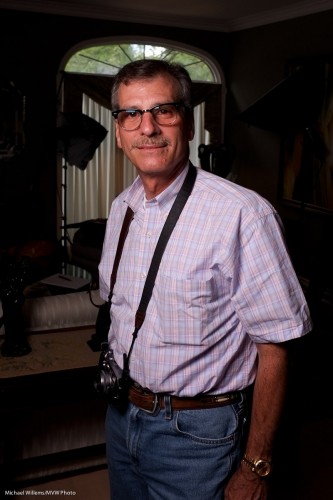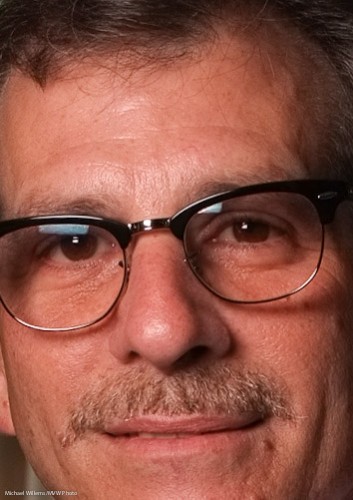Professional studio portrait cameras have to be the most expensive models. That’s just a given.
Right?
Oh wait. No… they do not need to be the most expensive. I have taken many studio shots with Digital Rebels and a 50mm f/1.8 lens (go get one if you do not yet own one).
Today I took a studio shot of my friend and student Paul M. Rather than using my 1Ds Mark III, I used the little Fuji X100 with its fixed 35mm equivalent lens – and got this:
This was made to show the effect of one flash and showing no ambient light. i.e. a setting which ensures that the flash does all the work. To do this I simply:
- Set the camera to manual, 1/125th second, f/5.6, 200 ISO. (take a test shot: it should look dark. If not, check that your auto ISO is disabled).
- Turned on the “external flash enabled” setting in the X100’s menu (you need to do that, or the hotshoe will be inactive).
- Connected a radio sender to the camera’s hotshoe, in order to fire a battery-operated Elinchrom portable strobe in a small softbox .
- Fired a test flash while holding the meter to where the person would be, then set the flash power level until the peter read f/5.6.
That was all. A professional quality studio shot with a point-and-shoot. Yes, true, it is not any point, and shoot, but still. And of course a simple SLR would have done too.
Is it sharp? Sure it is. Here’s a true size part of the picture, pixel for pixel:
(To see the true sharpness, click, then view it at true size)
X100 owners: remember to turn on the “external flash” setting, as described above. Also, remember to turn it off again when you are done – with this setting enabled, the camera refuses to go slower than 1/30th second in Aperture mode or Program mode. (if that is documented I am not sure where – but it is a sensible setting I suppose -as long as you know about it).
Note, finally, that this was a JPG straight out of the camera – yes a JPG, with the camera using standard settings. No extra sharpening was applied – all just standard settings.
So yes, if the lens focal length suits the portrait you are shooting, you can certainly use a small camera for studio work.



Hi Michael,
Pop Photo has a review on the X100 this month.
Thought you’d be interested.
Robert